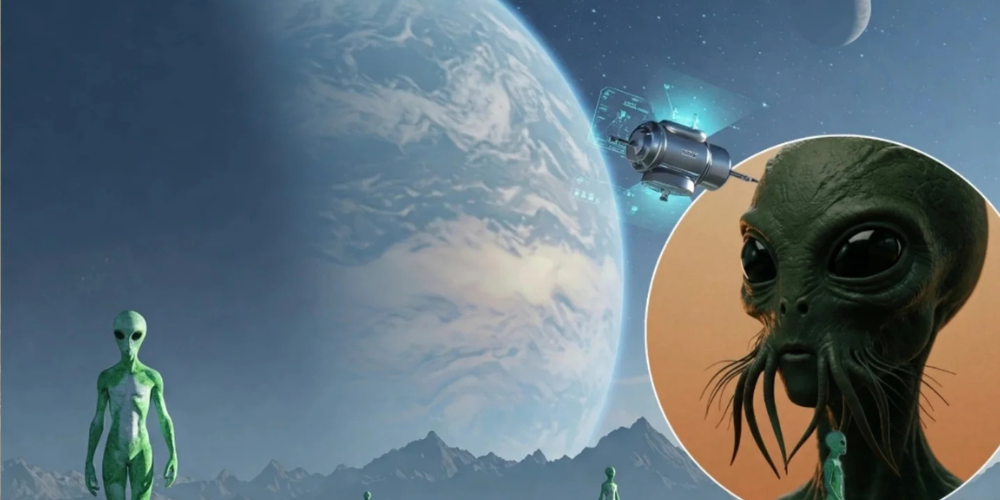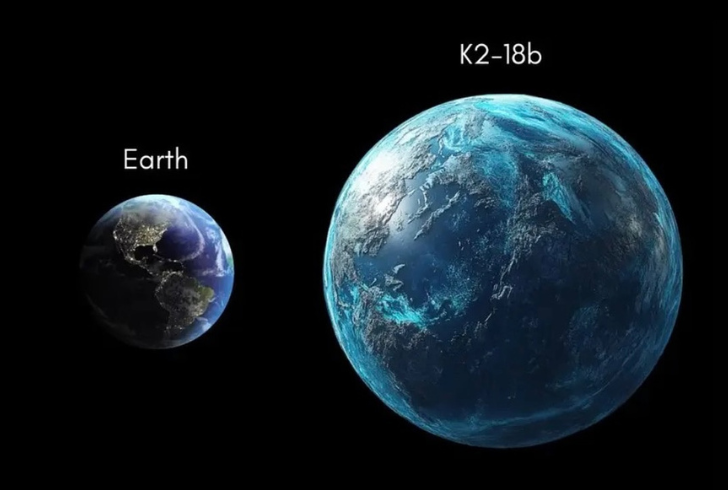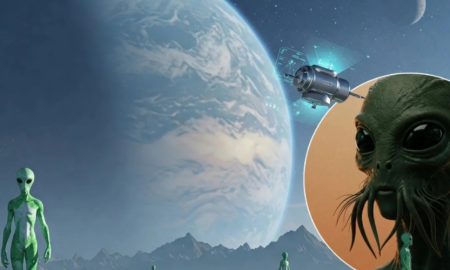
Signs of Alien Life Found on Distant Planet K2-18b

The search for life beyond Earth may have taken a meaningful step forward. Astronomers recently detected molecules in the atmosphere of a far-off planet that could hint at the presence of living organisms.
These findings, while not definitive, are among the strongest signals yet that Earth might not be the only place in the universe harboring life.
What Makes K2-18b So Intriguing?
K2-18b is not a new discovery. First identified back in 2015, this exoplanet lies more than 120 light-years from Earth, orbiting a red dwarf star in the constellation Leo. What makes it especially interesting is its location — it sits within the so-called “habitable zone.” That means the planet is at just the right distance from its star to allow water to exist in liquid form, a basic requirement for life as we know it.

Instagram | hidden.ny | K2-18b combines a hydrogen atmosphere and oceans on a planet much more massive than Earth.
And it’s no small world either. K2-18b is about 8.6 times more massive than Earth, placing it between Earth and Neptune in size. Scientists believe it might be a “Hycean” world — one covered in ocean and wrapped in a hydrogen-rich atmosphere.
A Telescope With a New Perspective
NASA’s James Webb Space Telescope (JWST) played a crucial role in this recent development. Launched in 2021, the telescope was built to peer deep into space and observe things that previous technology couldn’t.
When astronomers pointed JWST at K2-18b, they used it to capture light as the planet passed in front of its host star. This method, called transmission spectroscopy, allows scientists to examine the starlight that filters through a planet’s atmosphere. Based on the light’s changes, they can determine which gases are present.
The latest observations showed a mix of carbon-bearing molecules, specifically methane and carbon dioxide. These molecules are often linked with biological activity on Earth, and their presence sparked more focused attention.
A Surprising Hint at Life
But the most striking part came next. The team, led by astrophysicist Nikku Madhusudhan, spotted traces of gases like dimethyl sulfide (DMS) and dimethyl disulfide (DMDS). On Earth, these gases are almost exclusively produced by biological processes, such as marine phytoplankton. That’s why their detection on K2-18b is so exciting.
Even so, scientists remain cautious. As Madhusudhan explained, this discovery doesn’t confirm alien life. “We’re encouraged by the evidence,” he said, “but we must remain skeptical and examine every other possible explanation before making any bold claims.” According to the research team, it’s possible these molecules were formed by non-biological chemical reactions that we don’t yet understand.
What’s Next for Astronomers Studying K2-18b?

Instagram | thegalacticvoid | Discovering alien life would revolutionize our cosmic perspective and the definition of life.
Follow-up observations are already being planned. Scientists believe that an additional 16 to 24 hours of telescope time could help confirm whether the gases are truly biosignatures or just products of exotic chemistry.
These future observations would likely involve using JWST again, but with different instruments and methods to study new light wavelengths. This would help eliminate any overlap or confusion caused by previous scans.
Why This Matters
Finding life on another planet would be one of the most important scientific discoveries ever made. It would not only change how we see our place in the cosmos, but it would also raise questions about the potential for communication, travel, and understanding life itself on a deeper level.
The search is far from over, but signs like these push science closer to answering one of its oldest questions: Are we truly alone? With each new discovery, the idea of alien life moves a little further away from science fiction and a little closer to scientific reality.
This discovery, while not final, is an exciting development that keeps curiosity alive. The work of astronomers like Madhusudhan and his team continues to push boundaries and challenge assumptions about what we know—or think we know—about life beyond Earth.
More in News
-
`
Clare Cavanagh’s Top 10 Funniest Moments on the Internet
When it comes to online humor, Clare Cavanagh is someone who knows her way around a good laugh. As a comedian...
August 29, 2024 -
`
House and Senate Unite to Boost Maternal Health Options Across Massachusetts
The Massachusetts Legislature is taking significant steps to improve maternal health care across the state, with both the House and Senate...
August 24, 2024 -
`
How to Fix a Broken Tooth? Essential Procedures and Care
Breaking or chipping a tooth can be alarming, but it’s often manageable with prompt dental care. If a tooth is chipped,...
August 9, 2024 -
`
Enjoy a Day of Fun at the Shark Petting Zoo in Florida
A visit to the shark petting zoo in Florida is an experience that combines excitement, education, and unforgettable memories. This unique...
August 1, 2024 -
`
Is Melania Divorcing Trump if He Secures a Second Term?
As Donald Trump campaigns for a potential second term, Melania Trump’s conspicuous absence from his side has sparked speculation. With Trump’s...
July 25, 2024 -
`
The Complete Relationship Timeline of Sam Rockwell and Leslie Ribb
When it comes to Hollywood couples, few are as enduring and beloved as Sam Rockwell and Leslie Bibb. Their relationship, which...
July 15, 2024 -
`
5 Handy Ways of Getting Blood Out of Sheets
Waking up to a blood stain on your bedding is an unpleasant surprise. Figuring out how to get blood out of...
July 10, 2024 -
`
Will Ferrell’s Funniest Moments – The Best Quotes and Scenes
Will Ferrell, known for his outrageous humor and unforgettable characters, has delivered countless lines that have become ingrained in popular culture....
July 6, 2024 -
`
Mexico’s Top Detective Apologizes for “Inadequate” Fentanyl Comments
In April 2024, Felipe de Jesus Gallo, Mexico’s top detective, made a statement that stirred up controversy. During a U.S.-Mexico conference...
June 26, 2024














You must be logged in to post a comment Login